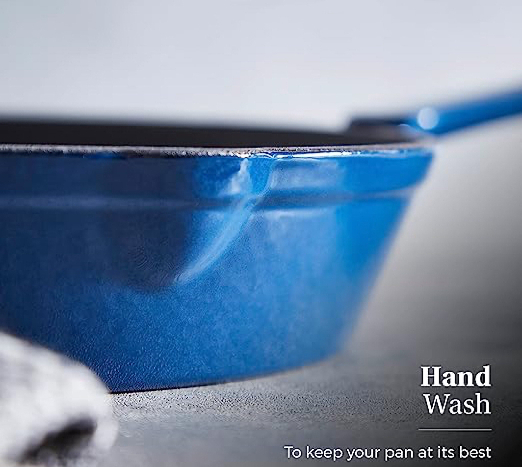...
2025-08-16 14:28
2864
At the heart of our facility lies a state-of-the-art production line that embodies precision and efficiency. The journey from raw ore to the final TiO2 product is a meticulously orchestrated sequence of beneficiation, calcination, and chlorination processes. Each step is finely tuned to ensure the highest purity and consistent particle size distribution—key attributes that define the performance of the end product.
...
2025-08-16 14:26
2831
Prof Maged Younes, Chair of EFSA’s expert Panel on Food Additives and Flavourings (FAF), said: “Taking into account all available scientific studies and data, the Panel concluded that titanium dioxide can no longer be considered safe as a food additive . A critical element in reaching this conclusion is that we could not exclude genotoxicity concerns after consumption of titanium dioxide particles. After oral ingestion, the absorption of titanium dioxide particles is low, however they can accumulate in the body”.
...
2025-08-16 14:06
1166
Background and overview
Globally, Iron Oxide is the second largest inorganic pigment after Titanium Dioxide and the first largest color inorganic pigment. Iron oxide pigments mainly include iron oxide red, yellow, black and brown with iron oxide as the basic material. Iron oxide yellow, also known as hydroxyl iron oxide (FeOOH), will be dehydrated and decomposed into red at about 177 ℃, so the application of ordinary iron yellow pigment in high-temperature occasions such as plastic processing and baking coatings is limited. Iron oxide yellow pigment can improve its temperature resistance through surface coating, so as to expand the application field of iron oxide yellow pigment.
The chemical formula of iron oxide yellow (also known as hydroxyl iron) is α- Fe2O3 · H2O or α- FeOOH, with needle like structure and yellow powder, is a kind of particle size less than 0.1 μ m. Iron series pigment with good dispersibility in transparent medium has strong coloring power, high covering power, insoluble in alkali and slightly soluble in ACID. Synthetic iron oxide yellow has the characteristics of light resistance, good dispersion, non-toxic, tasteless and difficult to be absorbed by human body. It is widely used in coatings, plastics, ink and pharmaceutical industry.
Physical and chemical properties and structure
1. Iron oxide yellow pigment has acid and alkali resistance, resistance to general weak and dilute acids, and is very stable in alkaline solution of any concentration.
2. Iron oxide yellow pigment has certain light resistance, heat resistance and weather resistance. Its coating color is durable and can keep the coating from being damaged in light. Iron oxide yellow pigment is stable in a certain temperature range, but beyond the limit temperature, its color begins to change, and the degree of change is more significant with the increase of temperature. Iron oxide yellow pigment is not affected by cold, heat, dry and wet weather conditions.
3. Iron oxide yellow pigment is very stable in any ambient atmosphere (such as gases containing H 2S, Co, so 2, HCl, no, etc.). And resistant to pollution, water, oil and solvent penetration, insoluble in water, mineral oil or vegetable oil.
4. Iron oxide yellow pigment has strong coloring power and high hiding power. With the decrease of pigment particle size, its coloring power is stronger.
application
Nano iron oxide yellow has the characteristics of acid resistance, alkali resistance, non toxicity and low price. It is widely used in coatings, plastics and rubber. The particle size of nano iron yellow is less than 100 nm, which makes it have some unique characteristics. When light shines on its surface, transmission and diffraction will occur, showing transparent yellow, and can strongly absorb ultraviolet rays, Therefore, it can be used as a functional pigment for the surface paint of high-grade cars, precision instruments, bicycles, motorcycles, cosmetics, food, drugs and other coloring additives.
...
2025-08-16 13:33
1783
The first step in sourcing high-quality conductive titanium dioxide is identifying reputable suppliers who specialize in producing this specific form of titanium dioxide. Unlike its non-conductive counterpart, which is widely used as a pigment, finding producers who cater to the niche requirements of conductivity can be challenging. It involves delving into the supplier's production processes, purity levels, and doping mechanisms that enhance electrical properties without compromising structural integrity.
...
2025-08-16 13:25
2721
Exploring the World of Affordable Titanium Dioxide Manufacturers
...
2025-08-16 13:12
1542
Fig. 1. Weight loss (%) of vitaminB2@P25TiO2NPs.
...
2025-08-16 13:08
1105
...
2025-08-16 12:54
2277
2: Clarification mechanism of coagulant
Chemical coagulation is a process in which chemical agents (coagulants) are added to water treatment to make colloidal dispersion system destabilize and agglomerate. In the coagulation process, small suspended particles and colloidal impurities are aggregated into larger solid particles to separate particulate impurities from water, which is called coagulation clarification.
After adding coagulant into water, colloidal particles and other small particles can be polymerized into larger flocs through the comprehensive action of mixing, coagulation and flocculation. The whole process of coagulation and flocculation is called coagulation.
(1) Destabilization and condensation of colloids
Adding electrolyte to water can compress the electric double layer and destabilize the colloid. The main mechanism is that the electric double layer of colloidal particles in water is compressed or neutralized by adding aluminum salt or iron salt coagulant. The coagulant and raw water are mixed rapidly and evenly, and a series of chemical reactions are produced to destabilize. This process takes a short time, generally about 1 min. Some cationic polymers can also play a role in the destabilization and condensation of colloids in water. These polymers have a long chain structure and positive charge in water. Their destabilization and condensation of colloids in water is due to the interaction of van der Waals force adsorption and electrostatic attraction.
(2) Flocculation and formation of floc (alum)
The particle size of the initial flocculate formed by colloid destabilization and coagulation in water is generally more than 1 m. at this time, Brownian motion can no longer push them to collide and form larger particles. In order to make the initial flocs collide with each other to form large flocs, it is necessary to input additional energy into the water to produce a velocity gradient. Sometimes it is necessary to add organic polymer flocculant into water, and the adsorption bridging effect of long chain molecules of flocculant is used to improve the probability of collision and adhesion. Flocculation efficiency usually increases with the increase of flocculate concentration and flocculation time.
Compared with polyaluminum chloride, polyaluminum chloride has the advantages of high density, fast settling speed and wide pH adaptability; the coagulation effect is less affected by temperature than that of polyaluminum sulfate; however, when adding ferric salt, it should be noted that when the equipment is not in normal operation, the iron ions will make the effluent color, and may pollute the subsequent desalination equipment.
...
2025-08-16 12:49
2649
At the heart of our facility lies a state-of-the-art production line that embodies precision and efficiency. The journey from raw ore to the final TiO2 product is a meticulously orchestrated sequence of beneficiation, calcination, and chlorination processes. Each step is finely tuned to ensure the highest purity and consistent particle size distribution—key attributes that define the performance of the end product.
Prof Maged Younes, Chair of EFSA’s expert Panel on Food Additives and Flavourings (FAF), said: “Taking into account all available scientific studies and data, the Panel concluded that titanium dioxide can no longer be considered safe as a food additive . A critical element in reaching this conclusion is that we could not exclude genotoxicity concerns after consumption of titanium dioxide particles. After oral ingestion, the absorption of titanium dioxide particles is low, however they can accumulate in the body”.
Background and overview
Globally, Iron Oxide is the second largest inorganic pigment after Titanium Dioxide and the first largest color inorganic pigment. Iron oxide pigments mainly include iron oxide red, yellow, black and brown with iron oxide as the basic material. Iron oxide yellow, also known as hydroxyl iron oxide (FeOOH), will be dehydrated and decomposed into red at about 177 ℃, so the application of ordinary iron yellow pigment in high-temperature occasions such as plastic processing and baking coatings is limited. Iron oxide yellow pigment can improve its temperature resistance through surface coating, so as to expand the application field of iron oxide yellow pigment.
The chemical formula of iron oxide yellow (also known as hydroxyl iron) is α- Fe2O3 · H2O or α- FeOOH, with needle like structure and yellow powder, is a kind of particle size less than 0.1 μ m. Iron series pigment with good dispersibility in transparent medium has strong coloring power, high covering power, insoluble in alkali and slightly soluble in ACID. Synthetic iron oxide yellow has the characteristics of light resistance, good dispersion, non-toxic, tasteless and difficult to be absorbed by human body. It is widely used in coatings, plastics, ink and pharmaceutical industry.
Physical and chemical properties and structure
1. Iron oxide yellow pigment has acid and alkali resistance, resistance to general weak and dilute acids, and is very stable in alkaline solution of any concentration.
2. Iron oxide yellow pigment has certain light resistance, heat resistance and weather resistance. Its coating color is durable and can keep the coating from being damaged in light. Iron oxide yellow pigment is stable in a certain temperature range, but beyond the limit temperature, its color begins to change, and the degree of change is more significant with the increase of temperature. Iron oxide yellow pigment is not affected by cold, heat, dry and wet weather conditions.
3. Iron oxide yellow pigment is very stable in any ambient atmosphere (such as gases containing H 2S, Co, so 2, HCl, no, etc.). And resistant to pollution, water, oil and solvent penetration, insoluble in water, mineral oil or vegetable oil.
4. Iron oxide yellow pigment has strong coloring power and high hiding power. With the decrease of pigment particle size, its coloring power is stronger.
application
Nano iron oxide yellow has the characteristics of acid resistance, alkali resistance, non toxicity and low price. It is widely used in coatings, plastics and rubber. The particle size of nano iron yellow is less than 100 nm, which makes it have some unique characteristics. When light shines on its surface, transmission and diffraction will occur, showing transparent yellow, and can strongly absorb ultraviolet rays, Therefore, it can be used as a functional pigment for the surface paint of high-grade cars, precision instruments, bicycles, motorcycles, cosmetics, food, drugs and other coloring additives.
Globally, Iron Oxide is the second largest inorganic pigment after Titanium Dioxide and the first largest color inorganic pigment. Iron oxide pigments mainly include iron oxide red, yellow, black and brown with iron oxide as the basic material. Iron oxide yellow, also known as hydroxyl iron oxide (FeOOH), will be dehydrated and decomposed into red at about 177 ℃, so the application of ordinary iron yellow pigment in high-temperature occasions such as plastic processing and baking coatings is limited. Iron oxide yellow pigment can improve its temperature resistance through surface coating, so as to expand the application field of iron oxide yellow pigment.
The chemical formula of iron oxide yellow (also known as hydroxyl iron) is α- Fe2O3 · H2O or α- FeOOH, with needle like structure and yellow powder, is a kind of particle size less than 0.1 μ m. Iron series pigment with good dispersibility in transparent medium has strong coloring power, high covering power, insoluble in alkali and slightly soluble in ACID. Synthetic iron oxide yellow has the characteristics of light resistance, good dispersion, non-toxic, tasteless and difficult to be absorbed by human body. It is widely used in coatings, plastics, ink and pharmaceutical industry.
Physical and chemical properties and structure
1. Iron oxide yellow pigment has acid and alkali resistance, resistance to general weak and dilute acids, and is very stable in alkaline solution of any concentration.
2. Iron oxide yellow pigment has certain light resistance, heat resistance and weather resistance. Its coating color is durable and can keep the coating from being damaged in light. Iron oxide yellow pigment is stable in a certain temperature range, but beyond the limit temperature, its color begins to change, and the degree of change is more significant with the increase of temperature. Iron oxide yellow pigment is not affected by cold, heat, dry and wet weather conditions.
3. Iron oxide yellow pigment is very stable in any ambient atmosphere (such as gases containing H 2S, Co, so 2, HCl, no, etc.). And resistant to pollution, water, oil and solvent penetration, insoluble in water, mineral oil or vegetable oil.
4. Iron oxide yellow pigment has strong coloring power and high hiding power. With the decrease of pigment particle size, its coloring power is stronger.
application
Nano iron oxide yellow has the characteristics of acid resistance, alkali resistance, non toxicity and low price. It is widely used in coatings, plastics and rubber. The particle size of nano iron yellow is less than 100 nm, which makes it have some unique characteristics. When light shines on its surface, transmission and diffraction will occur, showing transparent yellow, and can strongly absorb ultraviolet rays, Therefore, it can be used as a functional pigment for the surface paint of high-grade cars, precision instruments, bicycles, motorcycles, cosmetics, food, drugs and other coloring additives.
The first step in sourcing high-quality conductive titanium dioxide is identifying reputable suppliers who specialize in producing this specific form of titanium dioxide. Unlike its non-conductive counterpart, which is widely used as a pigment, finding producers who cater to the niche requirements of conductivity can be challenging. It involves delving into the supplier's production processes, purity levels, and doping mechanisms that enhance electrical properties without compromising structural integrity.
Exploring the World of Affordable Titanium Dioxide Manufacturers
Fig. 1. Weight loss (%) of vitaminB2@P25TiO2NPs.
2: Clarification mechanism of coagulant
Chemical coagulation is a process in which chemical agents (coagulants) are added to water treatment to make colloidal dispersion system destabilize and agglomerate. In the coagulation process, small suspended particles and colloidal impurities are aggregated into larger solid particles to separate particulate impurities from water, which is called coagulation clarification.
After adding coagulant into water, colloidal particles and other small particles can be polymerized into larger flocs through the comprehensive action of mixing, coagulation and flocculation. The whole process of coagulation and flocculation is called coagulation.
(1) Destabilization and condensation of colloids
Adding electrolyte to water can compress the electric double layer and destabilize the colloid. The main mechanism is that the electric double layer of colloidal particles in water is compressed or neutralized by adding aluminum salt or iron salt coagulant. The coagulant and raw water are mixed rapidly and evenly, and a series of chemical reactions are produced to destabilize. This process takes a short time, generally about 1 min. Some cationic polymers can also play a role in the destabilization and condensation of colloids in water. These polymers have a long chain structure and positive charge in water. Their destabilization and condensation of colloids in water is due to the interaction of van der Waals force adsorption and electrostatic attraction.
(2) Flocculation and formation of floc (alum)
The particle size of the initial flocculate formed by colloid destabilization and coagulation in water is generally more than 1 m. at this time, Brownian motion can no longer push them to collide and form larger particles. In order to make the initial flocs collide with each other to form large flocs, it is necessary to input additional energy into the water to produce a velocity gradient. Sometimes it is necessary to add organic polymer flocculant into water, and the adsorption bridging effect of long chain molecules of flocculant is used to improve the probability of collision and adhesion. Flocculation efficiency usually increases with the increase of flocculate concentration and flocculation time.
Compared with polyaluminum chloride, polyaluminum chloride has the advantages of high density, fast settling speed and wide pH adaptability; the coagulation effect is less affected by temperature than that of polyaluminum sulfate; however, when adding ferric salt, it should be noted that when the equipment is not in normal operation, the iron ions will make the effluent color, and may pollute the subsequent desalination equipment.
Chemical coagulation is a process in which chemical agents (coagulants) are added to water treatment to make colloidal dispersion system destabilize and agglomerate. In the coagulation process, small suspended particles and colloidal impurities are aggregated into larger solid particles to separate particulate impurities from water, which is called coagulation clarification.
After adding coagulant into water, colloidal particles and other small particles can be polymerized into larger flocs through the comprehensive action of mixing, coagulation and flocculation. The whole process of coagulation and flocculation is called coagulation.
(1) Destabilization and condensation of colloids
Adding electrolyte to water can compress the electric double layer and destabilize the colloid. The main mechanism is that the electric double layer of colloidal particles in water is compressed or neutralized by adding aluminum salt or iron salt coagulant. The coagulant and raw water are mixed rapidly and evenly, and a series of chemical reactions are produced to destabilize. This process takes a short time, generally about 1 min. Some cationic polymers can also play a role in the destabilization and condensation of colloids in water. These polymers have a long chain structure and positive charge in water. Their destabilization and condensation of colloids in water is due to the interaction of van der Waals force adsorption and electrostatic attraction.
(2) Flocculation and formation of floc (alum)
The particle size of the initial flocculate formed by colloid destabilization and coagulation in water is generally more than 1 m. at this time, Brownian motion can no longer push them to collide and form larger particles. In order to make the initial flocs collide with each other to form large flocs, it is necessary to input additional energy into the water to produce a velocity gradient. Sometimes it is necessary to add organic polymer flocculant into water, and the adsorption bridging effect of long chain molecules of flocculant is used to improve the probability of collision and adhesion. Flocculation efficiency usually increases with the increase of flocculate concentration and flocculation time.
Compared with polyaluminum chloride, polyaluminum chloride has the advantages of high density, fast settling speed and wide pH adaptability; the coagulation effect is less affected by temperature than that of polyaluminum sulfate; however, when adding ferric salt, it should be noted that when the equipment is not in normal operation, the iron ions will make the effluent color, and may pollute the subsequent desalination equipment.
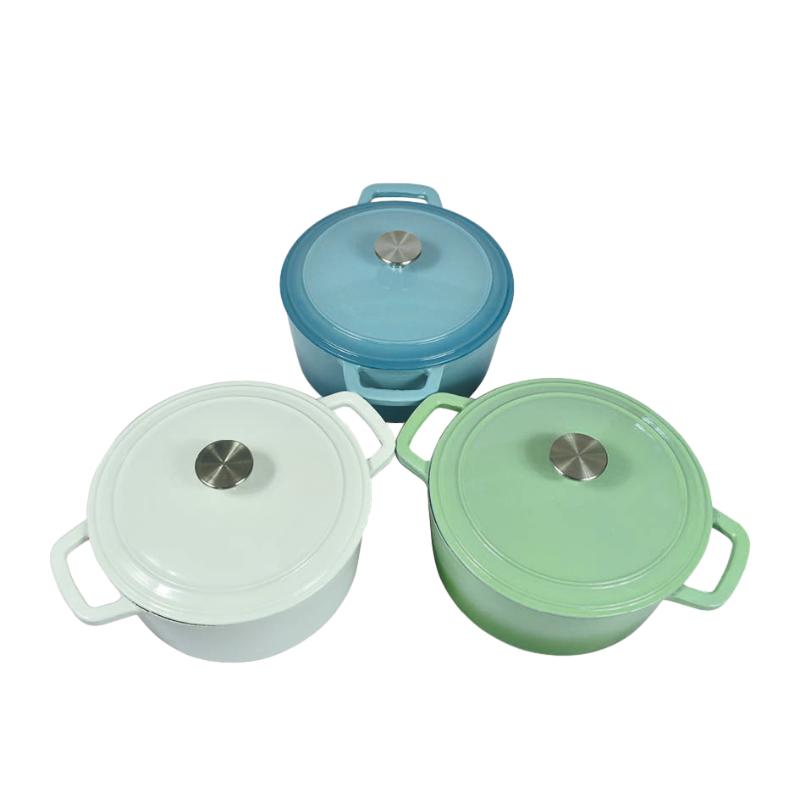

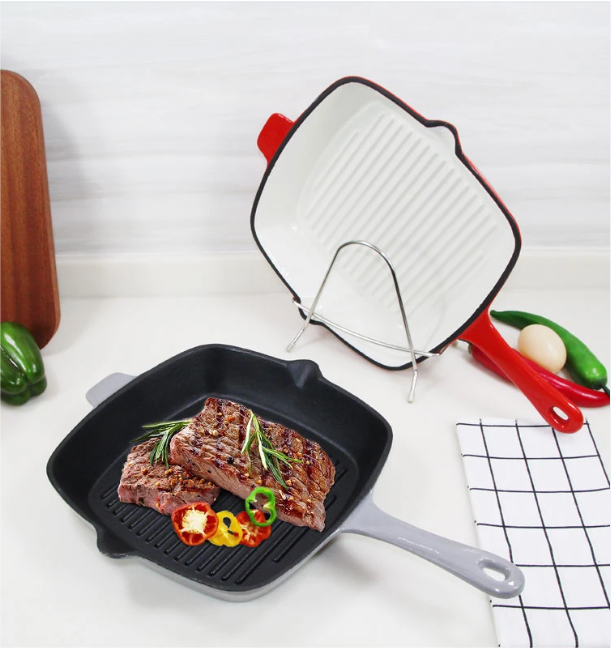 Although they may not be as durable as cast iron, they are ideal for those seeking a healthier cooking option Although they may not be as durable as cast iron, they are ideal for those seeking a healthier cooking option
Although they may not be as durable as cast iron, they are ideal for those seeking a healthier cooking option Although they may not be as durable as cast iron, they are ideal for those seeking a healthier cooking option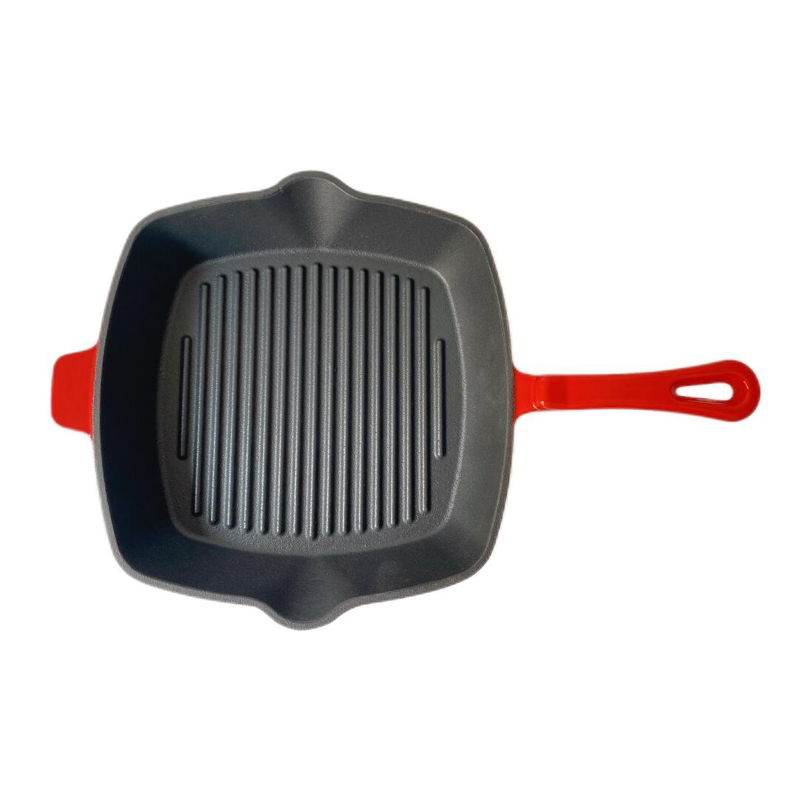
 It can be used on the stovetop, in the oven, or even over an open flame It can be used on the stovetop, in the oven, or even over an open flame
It can be used on the stovetop, in the oven, or even over an open flame It can be used on the stovetop, in the oven, or even over an open flame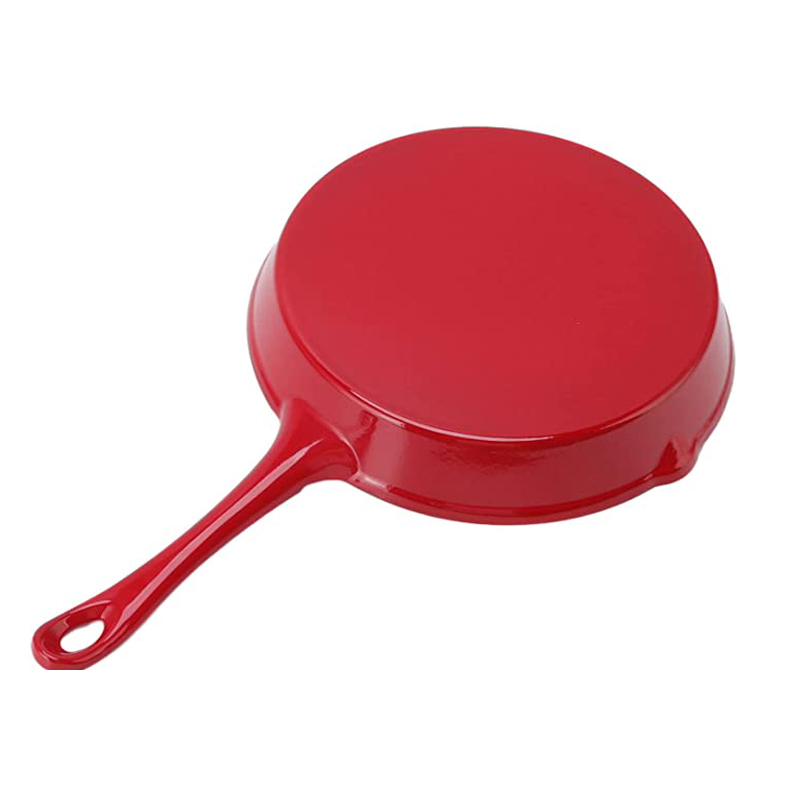 A good seasoning before use, and a thorough cleaning followed by a light coating of oil after each use, will keep your pan in prime condition for years to come A good seasoning before use, and a thorough cleaning followed by a light coating of oil after each use, will keep your pan in prime condition for years to come
A good seasoning before use, and a thorough cleaning followed by a light coating of oil after each use, will keep your pan in prime condition for years to come A good seasoning before use, and a thorough cleaning followed by a light coating of oil after each use, will keep your pan in prime condition for years to come

:max_bytes(150000):strip_icc():format(webp)/__opt__aboutcom__coeus__resources__content_migration__serious_eats__seriouseats.com__images__2015__04__20150406-chicken-white-wine-shallot-pan-sauce-recipe-08-926021d4c2c04bec89910e446592a9a8.jpg)


